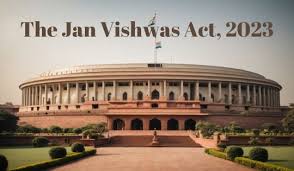Written By: Bhavna Harsha, Intern
The Insolvency and Bankruptcy Code, 2016 was a reform that was required in India. Prior to the above, there were no laws and thus, no streamlining of the procedure regarding insolvency and bankruptcy. The Insolvency and Bankruptcy Code (IBC) came in and rescued the debtor-creditor relationship.
It merged various legislations into one cohesive code and reversed the damage done by the piling up of non-performing loans and prolonged dissolution processes. IBC provides a time-bound solution to insolvency and makes sure all parties are looked after.
In 2011, the Financial Sector Legislative Reforms Commission, set up by Justice Srikrishna along with Bankruptcy Legislative Reforms Committee, set up by the Ministry of Finance produced a detailed two-volume report. In 2016, both volumes were combined into a bill we now call as the Insolvency and Bankruptcy Code.
What is insolvency and bankruptcy?
The terms often are incorrectly used interchangeably while they mean two very different things. ‘Insolvency’, legally defined, is a condition in which the liabilities of a company or individual exceed the assets and when dues become liable for payment, the individual/company is unable to raise sufficient cash for payment.
It is a form of financial distress which is typically caused due to bad financial and HR decisions, improper maintenance of accounts, increased input costs and excessive lawsuits. When enough attention is not given to the balanced growth of the company, it finds itself in a state of insolvency, unable to pay its dues.
‘Bankruptcy’ is a procedure companies and individuals go through to deal with insolvency. An institution files for bankruptcy in order to get aid from the government to pay off the dues.
“All bankrupt individuals and companies are insolvent but all insolvent entities need not be bankrupt.”
Insolvency can be changed and is temporary; bankruptcy is the permanent end phase. Insolvency is a financial distress while bankruptcy is a legal condition. An application has to be filed in order to declare oneself as ‘bankrupt’ and to initiate further proceedings.
Salient features of IBC
Insolvency Resolution Professionals: they are intermediaries who verify the claims of the creditors, form a creditors committee, handle the business of the debtor during the moratorium period and assist in making a revival plan as well.
Insolvency Resolution Process (IRP): the IRP is the plan of repayment that creditors have to approve, only then a binding order is passed to initiate if. If the plan is not approved, both, creditor as well as the debtor must apply for a bankruptcy order.
Information Utilities: this is an open-access database that can be used by all creditors, professionals, liquidators and stakeholders to speed up the insolvency resolution process. The primary objective of this is to collect authentic financial information of debtors and this process is carried out by centralized electronic databases.
Time-bound process: the whole point of IBC is to ensure no delays in the insolvency process. Companies are required to finish the exercise within 180 days and an extension of 90 days can be obtained with the consent of creditors.
This period of 180/270 days is also called the ‘moratorium period’. For smaller companies and start-ups (with an annual turnover of Rs. 1 crore) the period allotted is 90 days with a 45 days extension. No legal action can be taken during this period.
Insolvency and Bankruptcy Board of India (IBBI): the IBBI is appointed as the primary regulator and it oversees the insolvency proceedings. It consists of 10 members from the RBI and the Law and Finance Ministry.
Applicability: this code is applicable only on four entities namely individuals, partnership firms, limited liability partnership (LLP) and companies. It is not applicable on entities like trust boards, cooperatives etc. This code is also applied during the liquidation or voluntary winding up of companies.
Adjudicating bodies: the National Company Law Tribunal (NCLT) and Debt Recovery Tribunal (DRT) are the special bodies constituted and appeals lie in the National Company Law Appellate Tribunal (NCLAT) and Debt Recovery Appellate Tribunal (DRAT) respectively. The final appeal lies with the Supreme Court. NCLT is for companies and LLPs while DRT is for unlimited liability partnerships and sole proprietors.
Recent amendment
The whole world came to a standstill due to COVID-19 and the financial health of companies also deteriorated. Cash flow was restricted and most companies plunged into debt. In order to protect the interests of those who are going under loss, the Central Government brought in the Insolvency and Bankruptcy (Amendment) Code, 2020.
Under the amendment, no applications to initiate Corporate Insolvency Resolution Proceedings can be filed in case of default that arose on or before 23.03.2020 for a minimum of 6 months. It also increased the threshold for initiating CIRP proceedings from one lakh rupees to one crore rupees. It prevents companies from being forced into insolvency during these unprecedented times but there are still some ambiguities regarding certain clauses.
The suspension is in place from March 2020 for 6 months i.e. September 2020 and March 2021 if another extension of 6 months is obtained. There seems to be a blanket exemption in place without an actual end date to this special clause and the IBBI has not released nay notifications on the same either. Another part that is under speculation is with respect to personal guarantors.
Corporate debtors are exempted from CIRP but whether personal guarantors and even MSMEs fall in the same category is now an interpretational issue. Now that corporations cannot file for voluntary bankruptcy, they will begin to rely on the procedures under the SARFAESI Act/RDDBI Act. This amendment protects corporations from being cornered but it also defies the purpose of the code itself.





